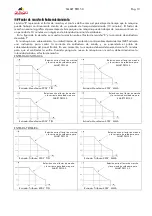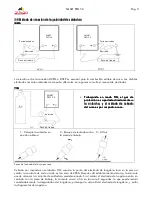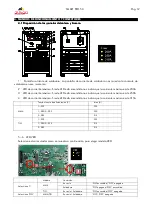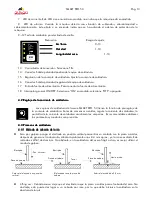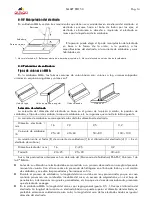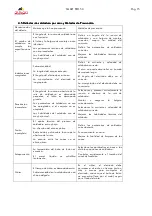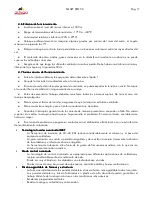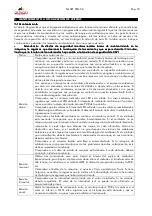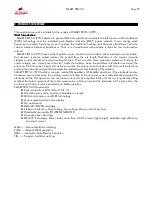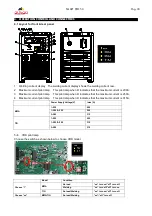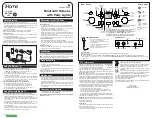
SMART PRO 5.0 Pág. 24
WELDING SPARKS can cause fire or explosion.
WELDING SPARKS can cause fire or explosion.
WELDING SPARKS can cause fire or explosion.
WELDING SPARKS can cause fire or explosion.
Remove fire hazards from the welding area. If this is not possible, cover them to prevent the welding
sparks from starting a fire. Remember that welding sparks and hot materials from welding can easily go
through small cracks and openings to adjacent areas. Avoid welding near hydraulic lines. Have a fire
extinguisher readily available.
Where compressed gases are to be used at the job site, special precautions should be used to prevent
hazardous situation.
When not welding, make certain no part of the electrode circuit is touching the work or ground. Accidental
contact can cause overheating and create a fire hazard.
Do not heat, cut or weld tanks, drums or containers until the proper steps have been taken to insure that
such procedures will not cause flammable or toxic vapors from substances inside. They can cause an
explosion even though they have been “cleaned”.
Vent hollow castings or containers before heating, cutting or welding. They may explode.
Sparks and spatter are thrown from the welding arc. Wear oil free protective garments such as leather
gloves, heavy shirt, cuff less trousers, high shoes and a cap over your hair. Wear ear plugs when welding out
of position or in confined places. Always wear safety glasses with side shields when in a welding area.
Connect the work cable to the work as close to the welding area as practical. Work cables connected to
the building framework or other locations away from the welding area increase the possibility of the welding
current passing through lifting chains, crane cables or other alternate circuits. This can create fire hazards or
overheat lifting chains or cables until they fail.
Rotating parts may be dangerous.
Rotating parts may be dangerous.
Rotating parts may be dangerous.
Rotating parts may be dangerous.
Use only compressed gas cylinders containing the correct shielding gas for the process used and properly
operating regulators designed for the gas and pressure used. All hoses, fittings, etc. should be suitable for the
application and maintained in good condition.
Always keep cylinders in an upright position securely chained to an undercarriage or fixed support.
Cylinders should be located:
-
Away from areas where they may be struck or subjected to physical damage.
-
A safe distance from arc welding or cutting operations and any other source of heat, sparks, or flame.
Never allow the electrode, electrode holder or any other electrically “hot” parts to touch a cylinder.
Keep your head and face away from the cylinder valve outlet when opening the cylinder valve.
Valve protection caps should always be in place and hand tight except when the cylinder is in use or
connected for use.
§1.
§1.
§1.
§1.3
3
3
3 The knowledge of Electric and Magnetic Fields
The knowledge of Electric and Magnetic Fields
The knowledge of Electric and Magnetic Fields
The knowledge of Electric and Magnetic Fields
Electric current flowing through any conductor causes localized Electric and Magnetic Fields (EMF). The
discuss on the effect of EMF is ongoing all the world. Up to now, no material evidences show that EMF may
have effects on health. However, the research on damage of EMF is still ongoing. Before any conclusion, we
should minimize exposure to EMF as few as possible.
In order to minimize EMF, we should use the following procedures:
Route the electrode and work cables together – Secure them with tape when possible.
All cables should be put away and far from the operator.
Never coil the power cable around your body.
Make sure welding machine and power cable to be far away from the operator as far as possible
according to the actual circumstance.
Connect the work cable to the workpiece as close as possible to the area being welded.
The people with heart-pacemaker should be away from the welding arc

